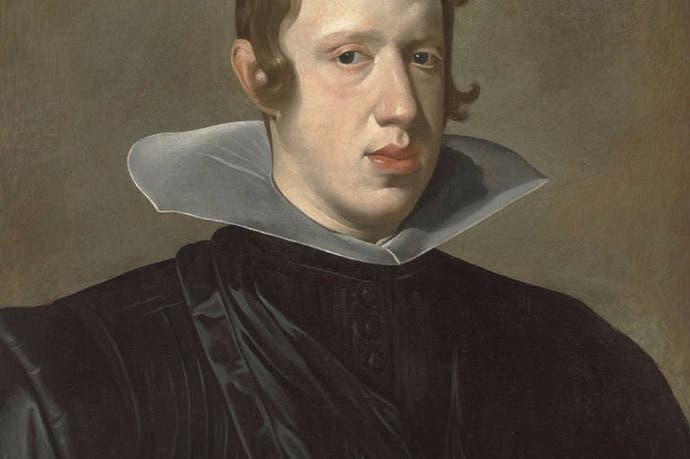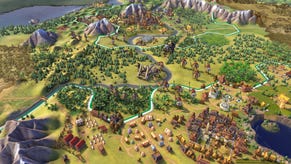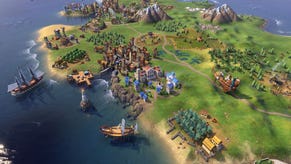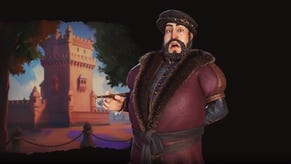When it comes to Spain, I kind of wish Civ 6 had chosen a different Philip
Velanquished!
Sid Meier's Civilization games are brilliant for learning about historical figures. Historical figures such as Pedro II of Brazil, say, who had passed me by before Civ 5's Brave New World expansion introduced us, and who turned out to be a man who was seriously missing from my life. Gentle and rather sad, Pedro II never really wanted to be ruler, but he still aced it if you ask me: he abolished slavery and - this is a recent discovery of mine - he was close friends with Jean-Martin Charcot, the father of modern neurology. How close were they? Let's just put it this way: he gave Charcot a pet monkey called Rosalie. They were at the monkey-exchanging level of friendship. I would know none of this if it wasn't for Civ 5's prompting.
Pedro II is still there for Civ 6 - thank God - but there are changes elsewhere in the roster. Take Spain, for example. Isabella is out and Philip II is back. This makes total sense. Philip II ruled Spain during the height of its Golden Age. The empire was vast and intimidating, with territories, Wikipedia informs me, on every continent then known to the Europeans. More Wiki goodness: "The expression, "the empire on which the sun never sets," was coined during Philip's time to reflect the extent of his dominion."
There are plenty of other good reasons for choosing Philip II. He was the guy behind the Spanish Armada, so he's good value from a greatest historical hits perspective. He was also a religious force to be reckoned with, an absolute zealot for Catholicism. This is where he seems to fit into Civ 6, I gather. Under Philip II, Spain is a religious powerhouse. It has a Treasure Fleet ability that allows it to get a boost from trade routes, but elsewhere it's God all the way: a combat bonus when fighting against players of other religions, a Conquistador unit that, amongst other things, forces captured cities to automatically convert to Spain's religion if he's in an adjacent hex. Then there's the Mission building, a unique improvement that produces faith, and produces faith even more aggressively if it's built on a different continent. Religion and conquest come together rather neatly under Philip II: a devout expansionist. Perfect for Civ.
And yet! And yet I sort of wish they'd chosen a different Philip. Namely, I wish they'd chosen Philip IV.

Here's Philip IV as painted by his best friend, Diego Velazquez. Quite a character, eh? Velazquez tended to be surprisingly honest with his court portraits - so much so that Philip IV eventually asked not to be painted anymore, as the brush of the master was revealing much that he did not want to see. (It was making him look like Snoopy on a serious downer, to be specific.) One of the many benefits of this aesthetic approach is that you get a figure from history that I feel you can really get a good human sense of.
And although Philip IV ruled over a court that seems self-consciously archaic - the art historian Matthew Collings, who reminds me a bit of Bertie, described the levels of ritualised control of the king's time as akin to the weirdest indulgences of Gormenghast - in other ways, he seems rather modern. Philip IV ruled over a huge empire, but it was running out of money and generally falling apart. He felt cut off and isolated, drawn into fights he could not win and lumbered with debt he could not control. He is often seen as a weak leader, in thrall to the strong characters of his closest advisers. And this, in a weird sort of way, makes him relatively easy to get a handle on. Velazquez said that the king mistrusted himself and deferred too much. He sounds like a full-blown modern to me! I bet he'd drop some serious truth on Tumblr.
Obviously Philip IV is a harder sell than Philip II, but I reckon there are positives to be found. One of the great joys of playing as Brazil in Civ 5 is that I feel a need to play in character as Pedro II - to play as a gentle man who does not really relish the act of ruling. Philip IV has a little of that role-playing potential too. How best to capture the hesitant sense of a man who is never sure that he is doing the right thing? A man whose empire is threadbare, who must feel the presence of Philip II looming large over him?
And under Philip IV, Spain's strengths would shift rather. There aren't many world leaders whose best friends are the greatest artist of the age, and with Philip IV it was no coincidence. As Philip II was all about religion, Philip IV was head-over-heels for paintings and sculptures, despatching Velazquez to Italy to buy the greatest works available, and spending money Spain really didn't have on objects with no utility beyond their beauty.
Philip IV's Spain, in other words, would be a wonderful risk/reward Culture rush. Can you buy up all the great art on Earth and secure victory before the wheels come off your shambling, rust-bucket economy? Speedy culture! Taste versus warfare. With Velazquez at my side, I reckon my Philip IV could just about pull that off.











